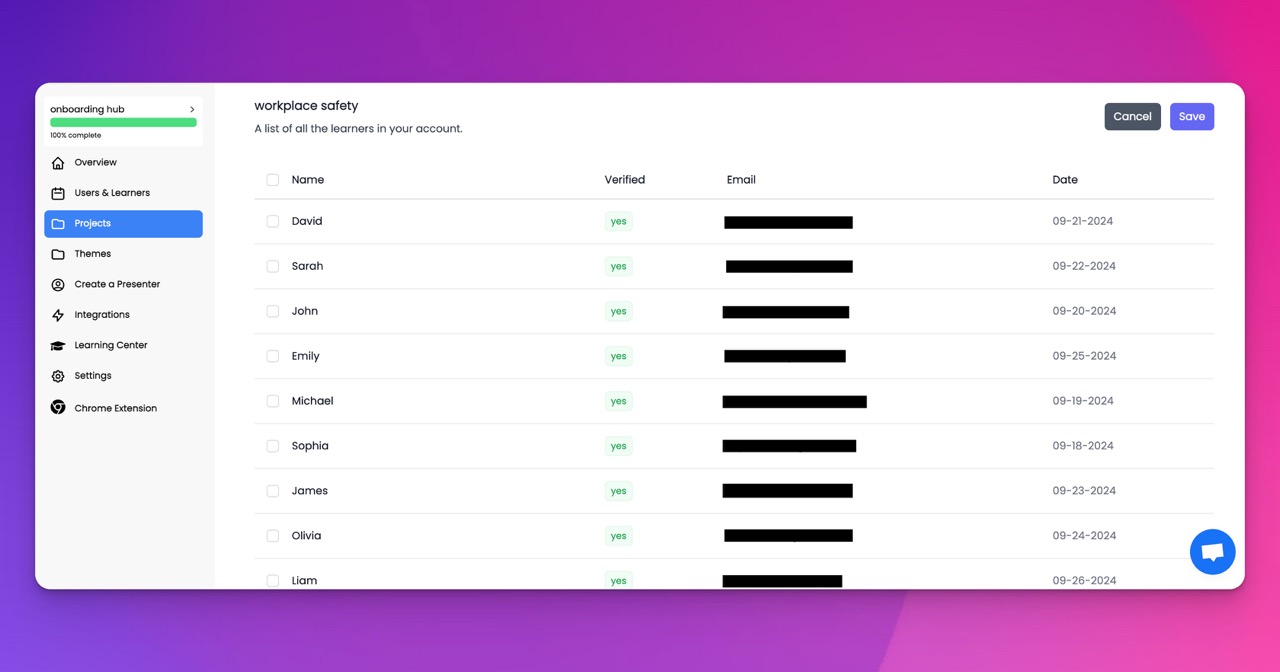🎉 Trainday now integrates with Zendesk and Hubspot 🎉 Trainday now integrates with Zendesk and Hubspot 🎉 Trainday now integrates with Zendesk and Hubspot
🎉 Trainday now integrates with Zendesk and Hubspot
Contact
Bridging the Skills Gap with AI: Customized Learning Paths in Action
In today's rapidly evolving job market, the skills gap is a significant challenge for many organizations. Traditional training methods often struggle to keep pace with the changing demands of the workplace. However, with the advent of Artificial Intelligence (AI) in the realm of employee training, there's a promising solution on the horizon. AI-driven platforms are transforming the way companies address this gap by offering customized learning paths based on data analytics. This blog post explores how these innovative platforms are making a difference in bridging the skills gap.
The Rise of AI in Employee Training
The integration of AI into employee training is not just a technological advancement; it's a strategic approach to meet the ever-changing needs of the workforce. AI-driven training platforms enable companies to create comprehensive courses that include AI presenters and interactive quizzes. These platforms use data analytics to tailor the learning experience, ensuring that each employee receives training that is specifically aligned with their needs and the organization's objectives.
AI Presenters: A New Era of Instruction
AI presenters are at the forefront of this revolution. Unlike traditional e-learning modules, AI presenters can deliver content in a more engaging and interactive way. They can simulate human-like interactions, making the learning experience more relatable and effective. This approach helps in breaking down complex topics into digestible, engaging lessons.
Interactive Quizzes: Reinforcing Learning
Alongside AI presenters, interactive quizzes play a crucial role in reinforcing learning. These quizzes are tailored to the learner’s progress, adapting in difficulty and content based on their responses. This dynamic approach ensures that learners are constantly challenged and engaged, leading to better retention and application of knowledge.
Customized Learning Paths: Addressing the Skills Gap
The most significant advantage of AI-driven training is the creation of customized learning paths. Here’s how they are helping bridge the skills gap:
1. Data-Driven Personalization
AI platforms analyze a wealth of data, including employees' current skill levels, learning pace, and preferred learning styles. This analysis is used to create personalized training paths that address the specific skills gap of each employee.
2. Adaptive Learning
These training paths are not static. As employees progress through their courses, the AI continually adapts the content, ensuring that learning remains relevant and challenging. This adaptability is key to maintaining engagement and effectively bridging the skills gap.
3. Real-Time Feedback and Adjustment
AI-driven platforms provide real-time feedback to learners, allowing for immediate correction and adjustment. This feedback loop is crucial in ensuring that the learning path is always aligned with the learner's needs and the desired outcomes.
4. Scalability and Flexibility
AI-driven training can be scaled to accommodate any number of employees, making it a viable solution for both small businesses and large corporations. Additionally, the flexibility offered by these platforms means that employees can learn at their own pace and on their own schedule.
The Impact on Organizations and Employees
The benefits of using AI for customized learning paths are manifold:
For Organizations: They can rapidly upskill their workforce, keeping pace with industry changes and maintaining a competitive edge.
For Employees: They receive training that is directly relevant to their career growth, leading to increased job satisfaction and retention.
Conclusion
The use of AI in creating customized learning paths is a powerful tool in bridging the skills gap. By leveraging the capabilities of AI presenters and interactive quizzes, organizations can provide their employees with engaging, effective, and personalized training experiences. This approach not only enhances individual performance but also drives overall organizational success in an increasingly competitive and fast-paced world.
Accelerate Compliance.
Deliver OSHA-Ready Courses Instantly.
Empower your team with data-driven training solutions tailored to your industry's safety standards. Stay compliant, reduce risks, and boost productivity with AI-powered course creation.
